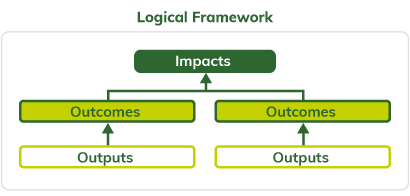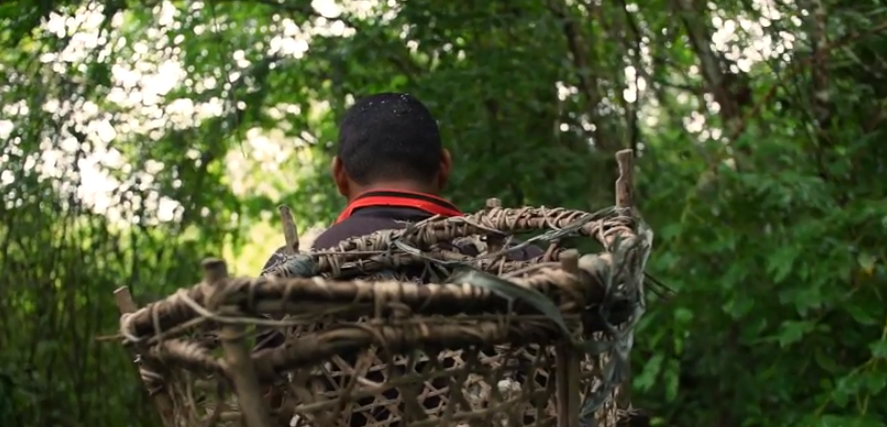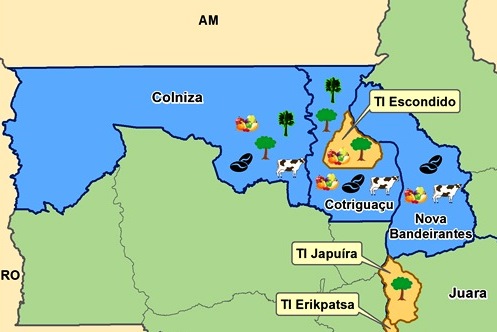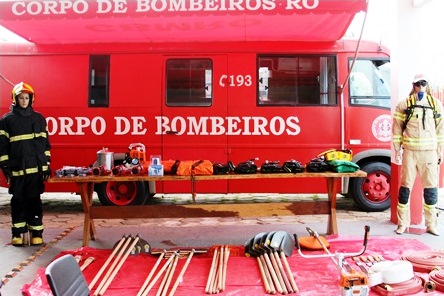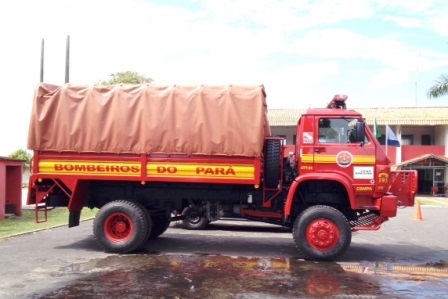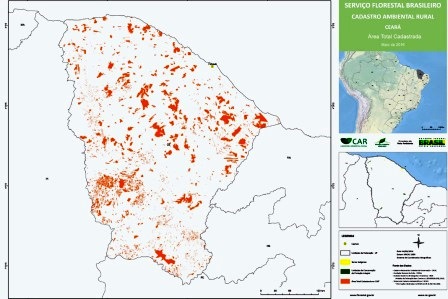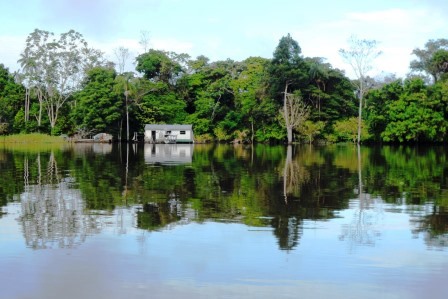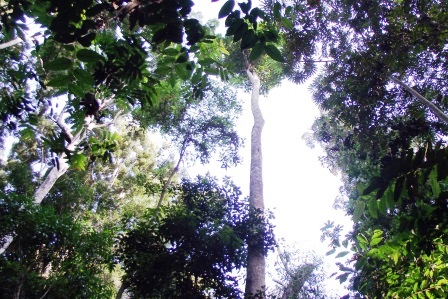RESULT AND IMPACT INDICATORS
The project activities contributed to the expected outcomes of the "sustainable production" (1) and “land-use planning" (3) components of the Amazon Fund’s Logical Framework.
Direct effect 1.1: Economic activities for the sustainable use of the forest and biodiversity developed in six TIs and three PAs in the southeastern region of the state of Amazonas; and outcome 1.2: Agroforestry and biodiversity production chains with value-added by industrial processing in two PAs in the southwestern region of the state of Amazonas.
Below are the agreed indicators for monitoring these outcomes:
- Revenue obtained from managed pirarucu fishing supported by the project (outcome indicator)
Target: R$ 292,000 | Result achieved: R$ 1.56 million
The result achieved in 2018, in the amount of R$ 1.56 million, exceeded the R$ 292,000 target agreed in terms of an increase over the revenue measured in the base year of 2014. The volume sold, as the following indicator shows, also exceeded the respective goal.
- Volume of pirarucu sales from managed fishing (outcome indicator)
Target: 73 tons | Result achieved: 291 tons
- Revenue from the sale of non-timber, non-processed forest products with the project’s support (outcome indicator)
Target: not defined | Result achieved: R$ 698,000
- Revenue from the sale of processed vegetable oil with the project’s support (outcome indicator)
Target: not defined | Result achieved: R$ 614,000
Direct effect 1.3: Expanded managerial and technical capacities for the implementation of good practices in sustainable production chains and the organization and management of associations in TIs and PAs in the southwestern region of the state of Amazonas.
The agreed indicators for monitoring this outcome were:
- Number of individuals trained in good practices in sustainable production chains effectively using the techniques learned (outcome indicator)
Target: 573 | Result achieved: 2481
- Number of workshops on associations, cooperatives, community organization, administration and project management (output indicator)
Target: 24 | Result achieved: 40
Regarding Direct effect 3.2 - TI Rio Biá with consolidated management - the following indicators were agreed:
- Extension of the TI Rio Biá area with the strengthening of territory monitoring (outcome indicator)
Target: 400 km2 | Result achieved: 400 km2
The area of the TI Rio Biá that was monitored before the project implementation was about 250 km2.
- Number of territorial surveillance missions performed (output indicator)
Target: 100 | Result achieved: 103
As an overall result, the execution of the project benefited 6,188 people, of which 4,626 were members of indigenous communities.
The table below presents the evolution of deforestation in the last five years in the areas benefited by the project. The table shows the preservation of forest in these territories, a consequence of the ongoing activities of local communities, representative entities and projects aimed at the protection and sustainable use of the forest.
|
|
Area (km²)
|
Total area deforested (km²)
|
2019
|
2018
|
2017
|
2016
|
2015
|
|
TI Rio Biá
|
11,929
|
30.83
(0.3%)
|
0.14 (0.0%)
|
0.37 (0.0%)
|
0.59 (0.0%)
|
0.15 (0.0%)
|
0.32 (0.0%)
|
|
TI Espírito Santo
|
329.1
|
0.0
(0.0%)
|
0.0
(0.0%)
|
0.0
(0.0%)
|
0.0
(0.0%)
|
0.0
(0.0%)
|
0.0
(0.0%)
|
|
TI Acapuri de Cima
|
182.7
|
0.17
(0.1%)
|
0.0
(0.0%)
|
0.0
(0.0%)
|
0.0
(0.0%)
|
0.0
(0.0%)
|
0.0
(0.0%)
|
|
TI Estação
|
1,341.3
|
10.66
(0.8)
|
0.0
(0.0%)
|
0.0
(0.0%)
|
5.55
(0.4%)
|
0.08
(0.0%)
|
0.0
(0.0%)
|
|
TI Macarrão
|
431.7
|
15.78
(3.7%)
|
0.21
(0.0%)
|
0.07
(0.0%)
|
0.10
(0.0%)
|
0.0
(0.0%)
|
0.08
(0.0%)
|
|
TI Deni
|
15,377.1
|
60.43
(0.4%)
|
0.94
(0.0%)
|
0.45
(0.0%)
|
0.28
(0.0%)
|
0.29
(0.0%)
|
0.30
(0.0%)
|
|
RDS Uacari
|
6,386.3
|
50.5
(0.8%)
|
0.06
(0.0%)
|
0.14
(0.0%)
|
0.14
(0.0%)
|
0.27
(0.0%)
|
0.13
(0.0%)
|
|
RDS Cujubim
|
25,060.5
|
23.49
(0.1%)
|
0.21
(0.0%)
|
0.0
(0.0%)
|
0.0
(0.0%)
|
0.0
(0.0%)
|
0.0
(0.0%)
|
|
RESEX Médio Juruá
|
2,869.5
|
37.21
(1.3%)
|
0.28
(0.0%)
|
0.22
(0.0%)
|
0.18
(0.0%)
|
0.37
(0.0%)
|
0.08
(0.0%)
|
(values in parentheses = % of total area)
Source: dpi.inpe.br/prodesdigital/prodesuc.php
Institutional and administrative aspects
In addition to involving four agglutinated entities (Copiju, Aspodex, AERDSC and Amaru), the project helped to strengthen three other local organizations that play a key role in the commercialization of sociobiodiversity products: the Association of Community Members Working for the Development of the Municipality of Jutaí (ACJ), the Médio Juruá Agroextractive and Energy Development Cooperative (Codaemj) and the Carauari Rural Producers Association (Asproc).
For the purpose of carrying out activities in the state PAs, partnerships were signed with the Mamirauá Institute, the Amazonas Sustainable Foundation (FAS), managers at the Chico Mendes Institute for Biodiversity Conservation (ICMBio) and at the Department of Climate Change and Management of Protected Areas (Demuc), an agency of the Amazonas state government. In turn, all project actions carried out in the TIs were formalized through a Technical Cooperation Agreement signed between Opan and National Indian Foundation (Funai) in 2014.
The agglutinating function performed by Opan was of great importance for improving its management practices and strengthening its governance, a result of its strategic planning. Throughout the project execution, Opan reviewed its financial execution manual and improved its selection processes and the drafting of the contracts signed with consultants and service providers. Finally, it implemented an annual coordinators' forum, which meets three times a year for the planning, monitoring and evaluation of programs.
Risks and lessons learned
The project allowed Opan and its partners to acquire new skills and knowledge on sustainable management of fishing and nontimber forest products. The executing entities themselves evaluated that the strategy of combining value chains with territorial management proved to be effective in strengthening collective organization, income generation and environmental protection.
When Arapaima project’s field activities started in 2015, Opan found a different situation from that initially identified in the municipalities of Jutaí and Carauari when the project was submitted. Changes involving some key actors in partner organizations and the specification of demands of some sociobiodiversity chains required additional time for renegotiating partnerships.
Sustainability of results
The project was properly executed, having fully implemented all the planned products and services and achieved its expected goals. These results are expected to remain benefiting the communities, as production activities in the sociobiodiversity chain are consolidated as an income option for these populations.
The positive results achieved by this project point to new opportunities along the value chain. An example of these opportunities is the market study on pirarucu leather carried out within the scope of the project, which has already resulted in improving the negotiation process with buyers and thus led to the signing of purchase and sales agreements more advantageous for community producers.
Finally, it is important to underline the exceptionality of the year 2020, which is being severely impacted by the Covid-19 pandemic. The long duration of the pandemic presents an additional challenge to the sustainability of the results of this and other projects in the Amazon, which reinforces the need for a closer look and a permanent search for actions to minimize its effects.


